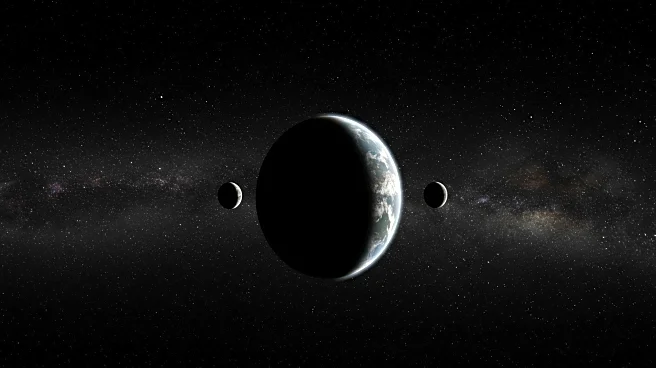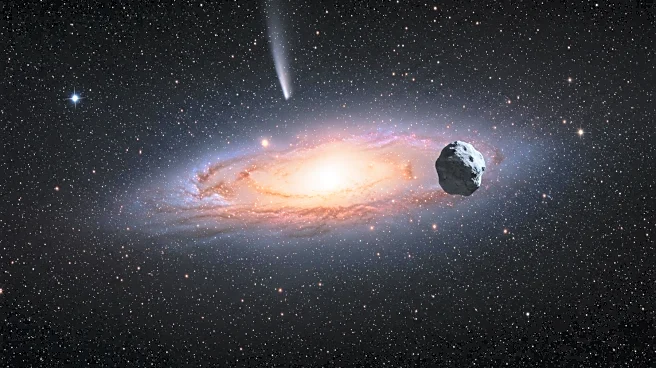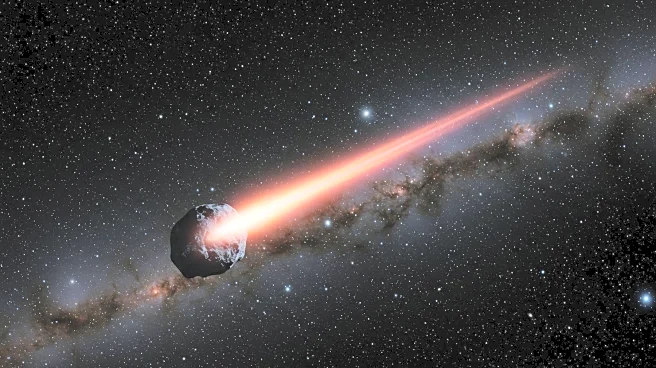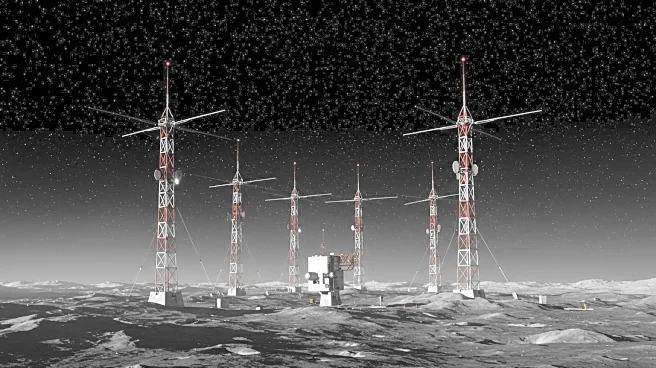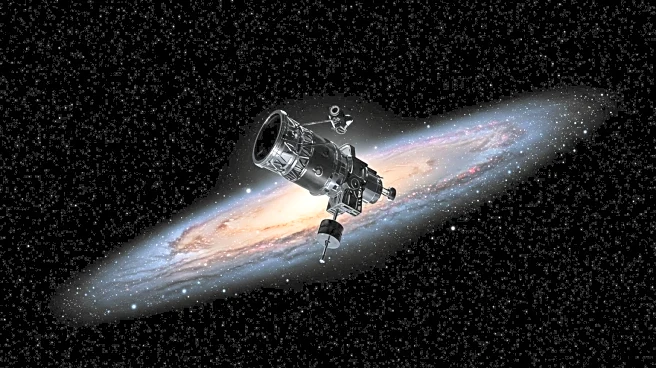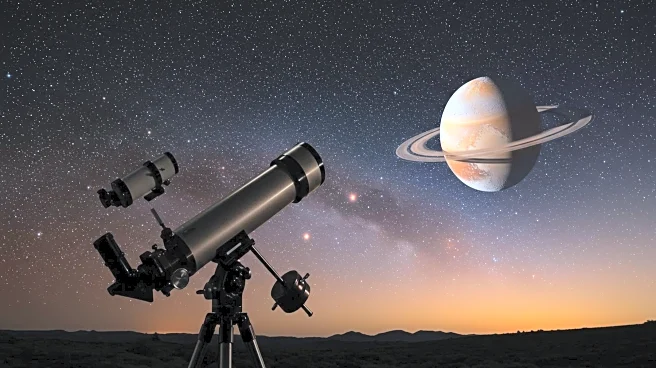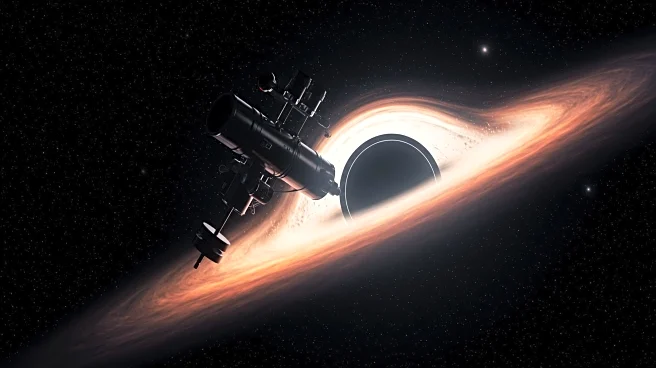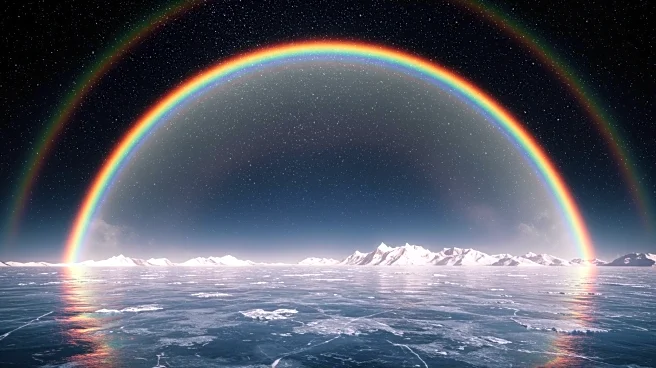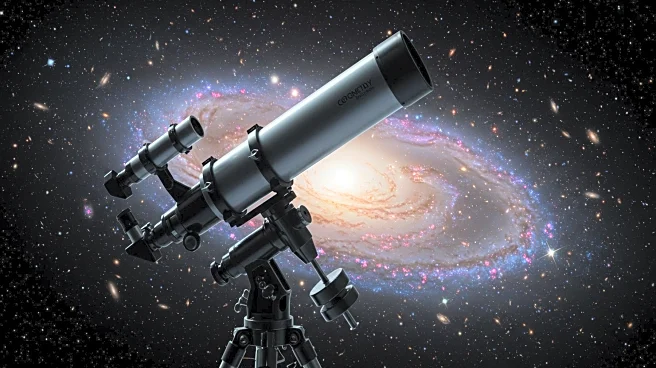What's Happening?
Recent observations from the James Webb Space Telescope (JWST) suggest that rogue planets, which are free-floating and starless, may be capable of forming their own systems of moons. These planetary-mass objects, weighing between five and ten Jupiters, have been found to possess disks with crystalline silicates, similar to those seen around young stars. This discovery indicates that planetary systems can form independently of stars, potentially creating miniature versions of solar systems. The presence of these disks suggests that rogue planets could develop extensive systems of moons and rings, akin to those of Jupiter or Saturn.
Why It's Important?
The ability of rogue planets to form moons challenges existing models of planetary system formation, which traditionally involve a central star. This finding expands the understanding of planetary formation processes and suggests that such systems could be more common than previously thought. It opens new avenues for research into the dynamics of planetary systems and the potential for life in starless environments. The discovery also highlights the diversity of celestial objects in the galaxy and the complex interactions that govern their formation.
What's Next?
Further studies will focus on confirming the presence of moons around rogue planets and understanding the mechanisms behind their formation. Researchers will continue to use JWST and other telescopes to observe these objects and analyze their disks. The findings could lead to a reevaluation of planetary system models and influence the search for extraterrestrial life in unconventional environments.
Beyond the Headlines
The discovery of rogue planets forming moons raises philosophical questions about the nature of planetary systems and the criteria used to define them. It challenges the notion that stars are necessary for the formation of complex systems, suggesting that planets can exist and evolve independently. This could lead to broader discussions in the scientific community about the classification and understanding of celestial objects.
